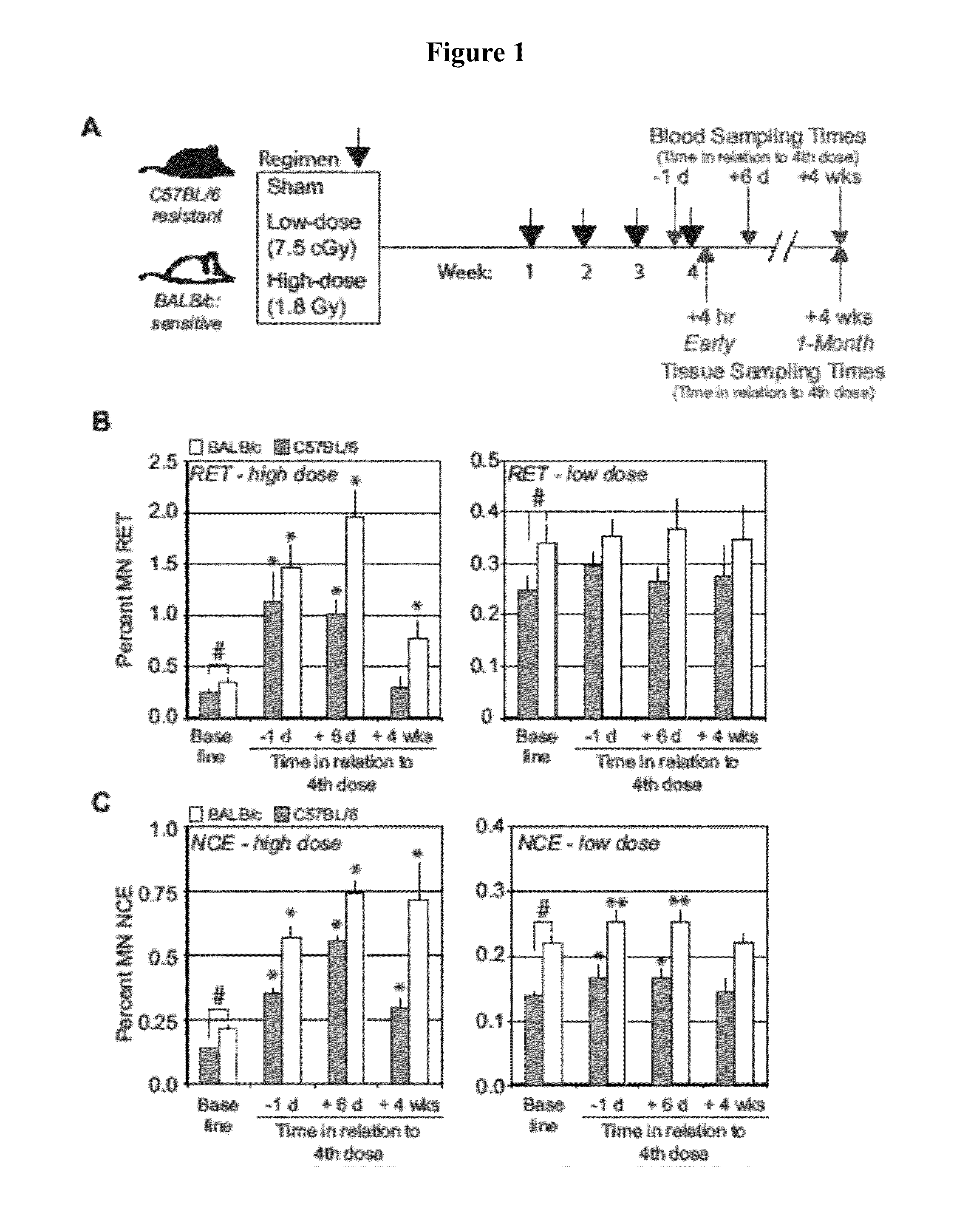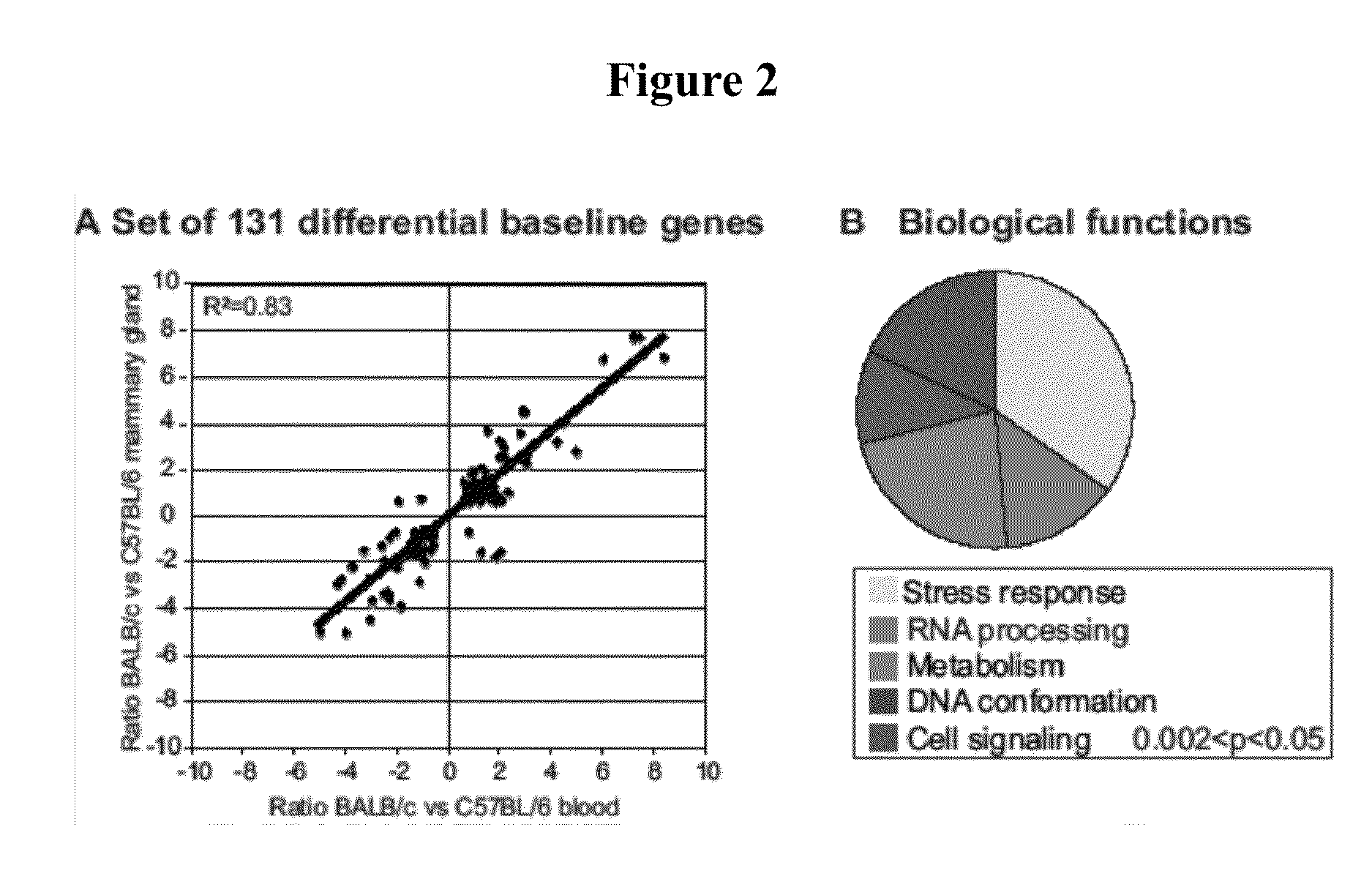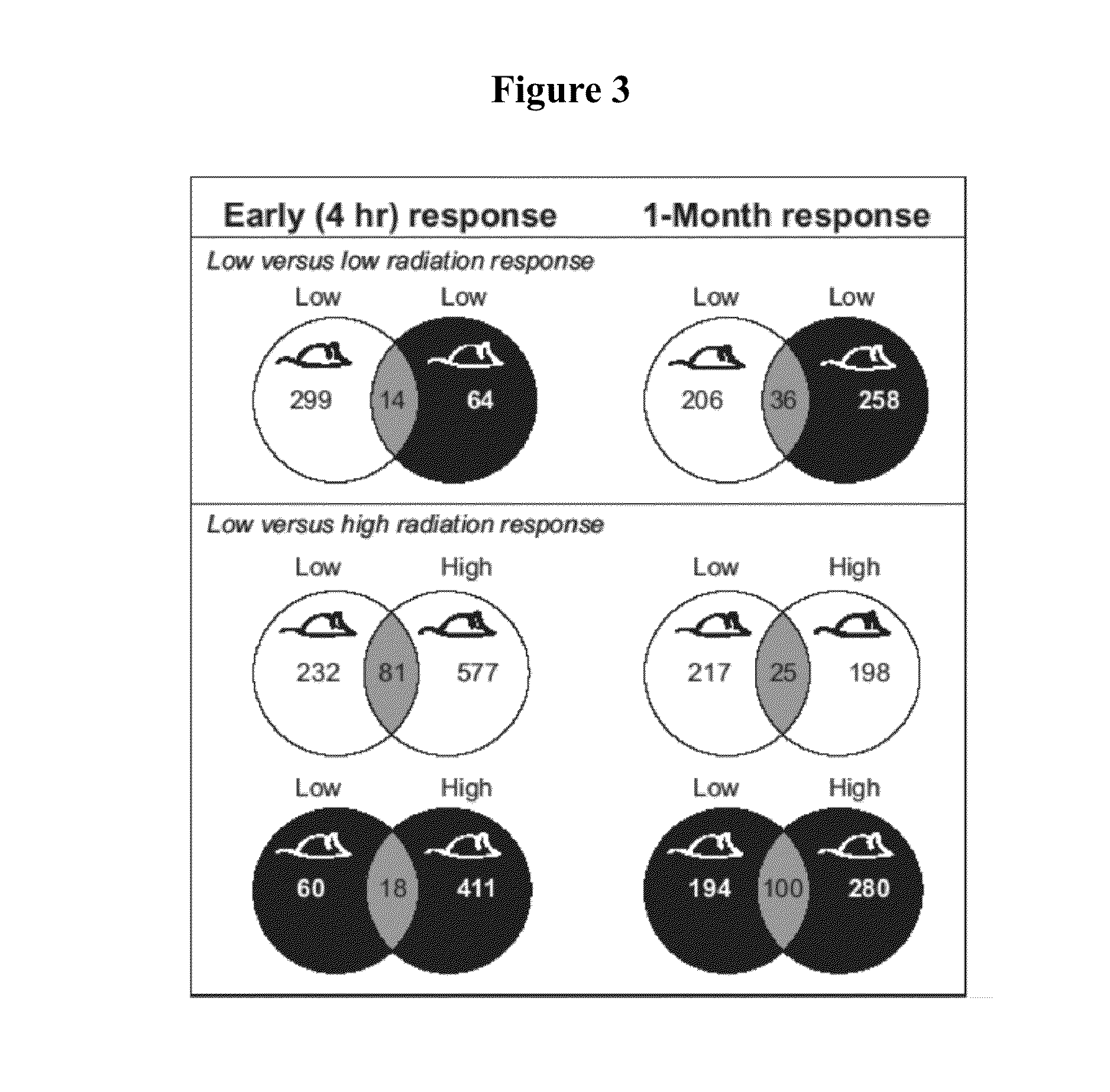Gene Signatures That Predispose Or Protect Individuals From Low-Dose Radiation Induced Breast Cancer Or Are Associated with Disease-Free Survival
a gene signature and low-dose radiation technology, applied in the field of breast cancer, can solve the problems of serious public misconceptions and fears, remarkably little knowledge of the molecular tissue response, and increasing scientific challenges, and achieve the effect of lowering the predicted high the probability of disease free survival
- Summary
- Abstract
- Description
- Claims
- Application Information
AI Technical Summary
Benefits of technology
Problems solved by technology
Method used
Image
Examples
example 1
Determining a 55 Biomarker Predictor Panel
[0313]The Baseline Frequencies of Micronuclei in Red Blood Cells and Transcription of 131 Genes in Nucleated White Blood Cells and Mammary Gland Tissues Differ Between BALB / c and C57BL / 6 Female Mice.
[0314]We used a highly sensitive flow-cytometric assay to assess the frequency of micronucleated red cells as a measure of genome instability in unirradiated young adult female mice (Dertinger S D, Torous D K, Tometsko K R (1997) Flow cytometric analysis of micronucleated reticulocytes in mouse bone marrow. Mutat Res 390: 257-262). FIG. 1B shows that the frequencies of immature reticulocytes (MN-RET) and mature normochromatic erythrocytes (MN-NCE) carrying micronuclei were ˜36% and ˜57% higher in the radiation-sensitive BALB / c strain than in the more radiation-resistant C57BL / 6 strain [14] (p<0.0001; Table 4). These differences are at the high end of baseline variation among mouse strains (Bhilwade H N, Chaubey R C, Chauhan P S (2004) Gamma ray i...
example 2
Determining a 36 Biomarker Predictor Panel
[0327]We then tested the hypothesis that the 1-month BALB / c signature (i.e., the genes that are significantly upregulated at 1 month after LD exposure in relation to sham) was associated with disease-free survival among breast cancer patients. We selected the full and unbiased set of 105 BALB / c genes with significantly increased expression at 1 month after LD exposure. We examined the association of this signature with disease-free survival in breast cancer patients using two human knowledgebases that contain tumor expression profiles obtained at surgery linked to patient survival (Loi S, et al. (2007) J Clin Oncol 25: 1239-124; Pawitan Y, et al. (2005) Breast Cancer Res 7: R953-964). Similar to our analyses of the baseline signature, we summed the expression intensities of all corresponding human orthologs (n=96) from tumor samples and divided the patients into two groups by the median. The patients with “above median” expression values exp...
example 3
Determining a Four Signature Panel
[0353]We are seeking to understand the molecular tissue mechanisms that confer variation in risk or protection for disease-free survival (DSF) in women diagnosed with breast cancer. Using comparative genomics, we utilize human breast cancer knowledgebases that link tumor expression profiling with disease outcome, and expression databases of mammary and blood tissue of inbred strains of mice that differ in their sensitivities for mammary cancer. We have analyzed the expression profiles of diagnostic breast tissue from 1,174 cancer patients representing 5 independent databases. This analyses has identified genes that are significantly associated with decreased (risky) or increased (protective) DFS and that are also either associated with or independent of tumor proliferation status, a known predictor of cancer risk. The influence of proliferation status was assessed by adjustment with a meta-PCNA index consisting of ˜130 known proliferation genes.
[035...
PUM
| Property | Measurement | Unit |
|---|---|---|
| concentrations | aaaaa | aaaaa |
| energy | aaaaa | aaaaa |
| Relative frequencies | aaaaa | aaaaa |
Abstract
Description
Claims
Application Information
 Login to View More
Login to View More - R&D
- Intellectual Property
- Life Sciences
- Materials
- Tech Scout
- Unparalleled Data Quality
- Higher Quality Content
- 60% Fewer Hallucinations
Browse by: Latest US Patents, China's latest patents, Technical Efficacy Thesaurus, Application Domain, Technology Topic, Popular Technical Reports.
© 2025 PatSnap. All rights reserved.Legal|Privacy policy|Modern Slavery Act Transparency Statement|Sitemap|About US| Contact US: help@patsnap.com



